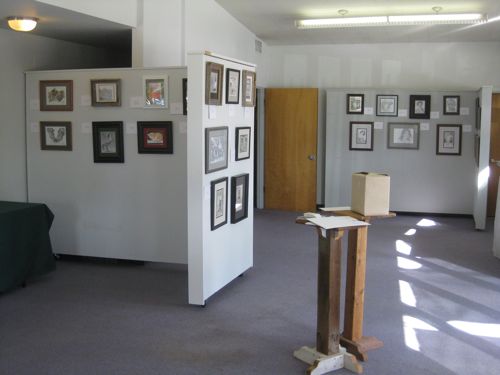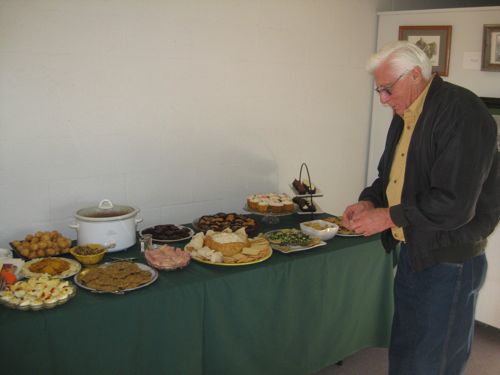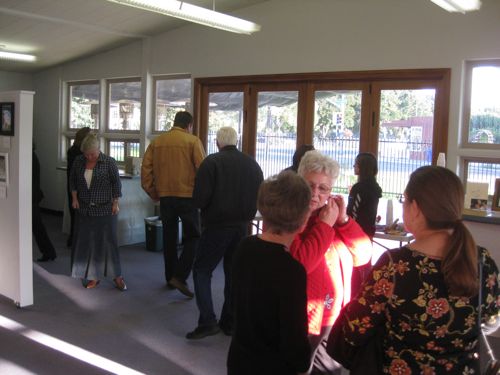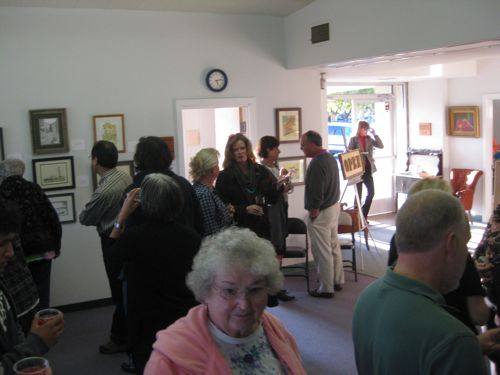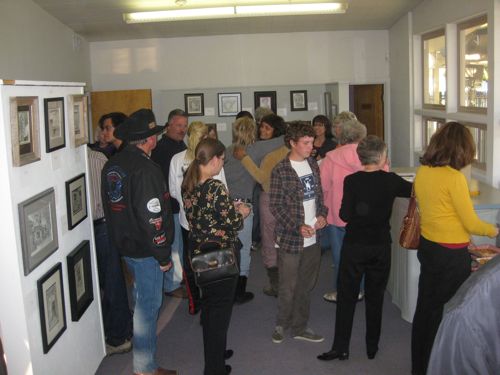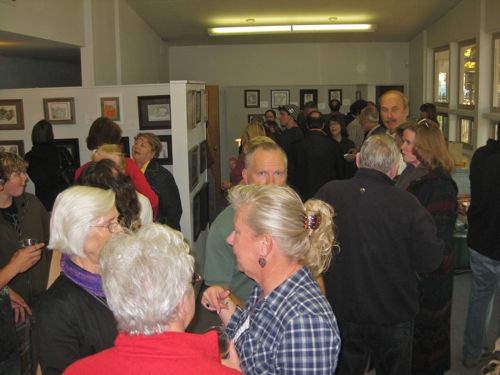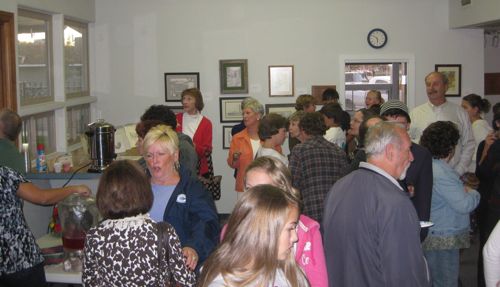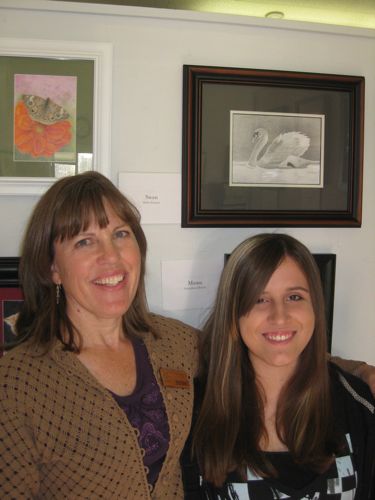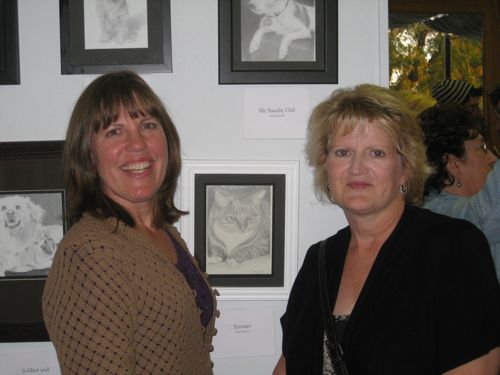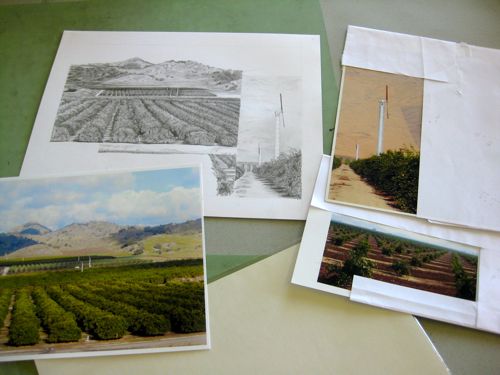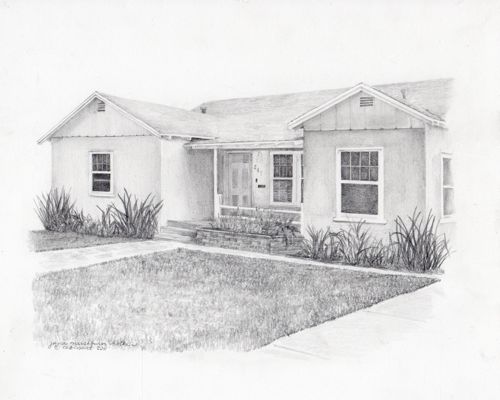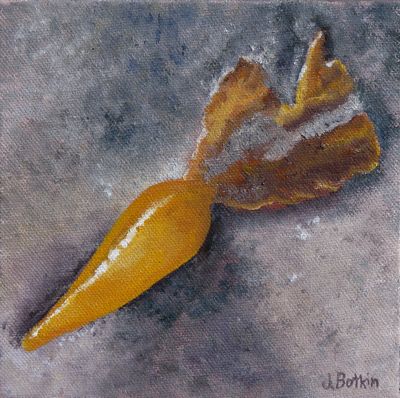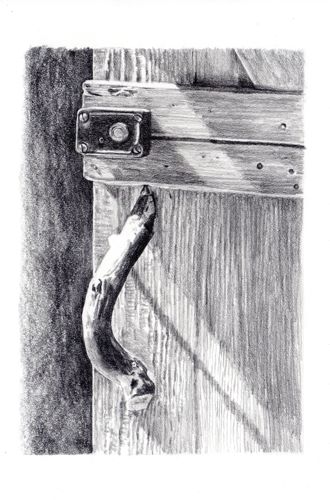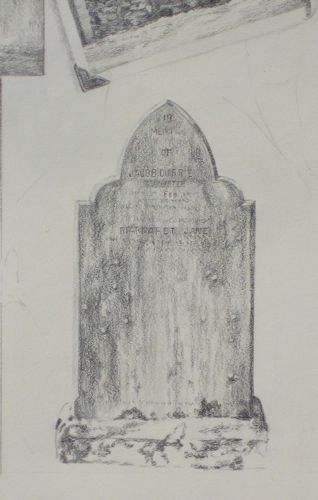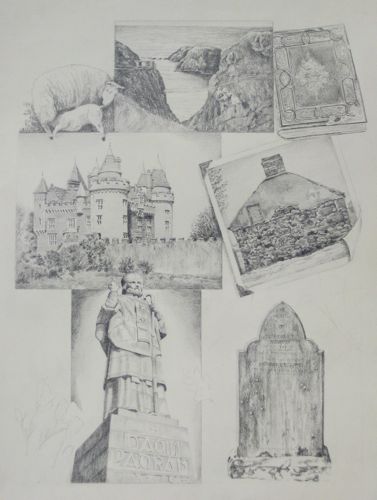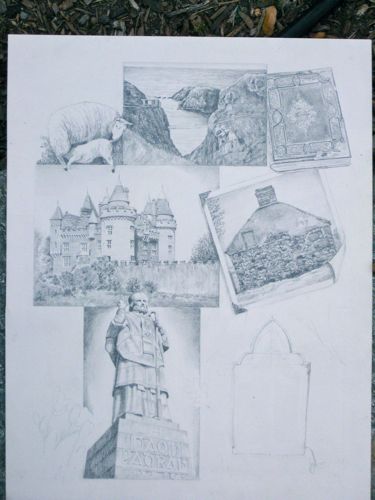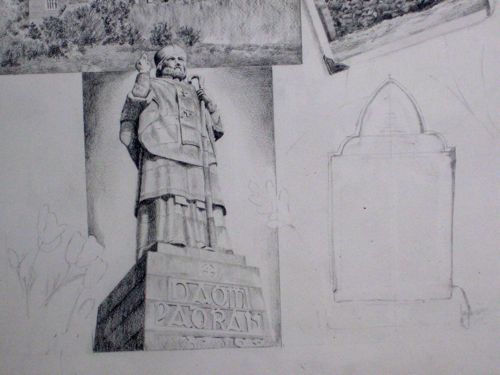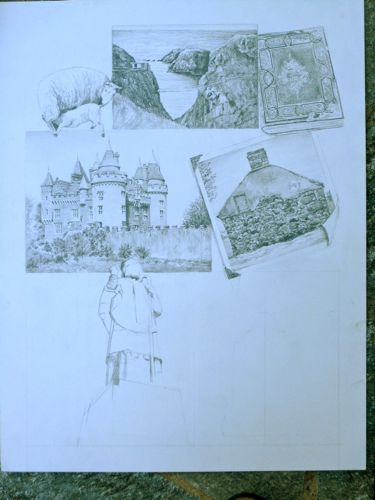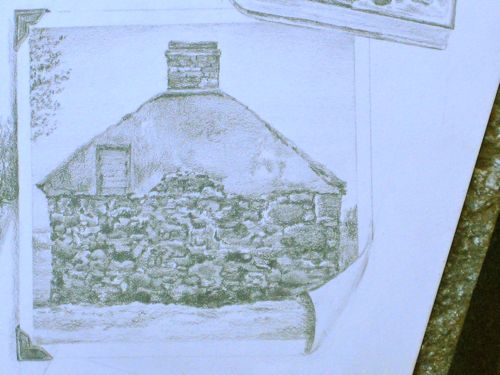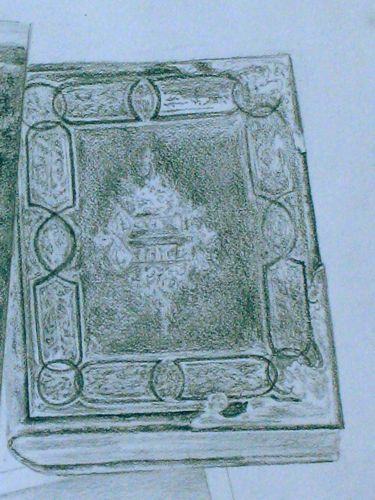. . . and EVERYONE came! The art show for my students was a HUGE success. It was elbow to elbow for almost the entire 2 hours. The work looked stunning, and if I had been any prouder of my students, lightning might have struck us all.
First, HUGE THANK YOU to Michael, Robin and Sylvia for taking charge of the food and beverages so that no one else got stuck in the kitchen and could just enjoy the show. THANK YOU!
One of my long term students, Jackie, helped me hang the show. I think she has been taking drawing lessons for around 6 years. We grouped the pieces by subject – portraits, florals, landscapes, animals. Then, I just enjoyed it by myself for awhile in the afternoon. (There is more art than appears in this photo, of course. Just didn’t want to antagonize you by showing you all 52 pieces so far away that you can’t really see them.)
The brown box is where you put your ballot after you vote for your 3 favorite pieces. The artist whose piece has the most votes will get a month of free drawing lessons!
This is Jerry – he is the husband of one of my drawing students. He bravely volunteered to be the first at the food table, and to let me photograph him “for scale”. 😎
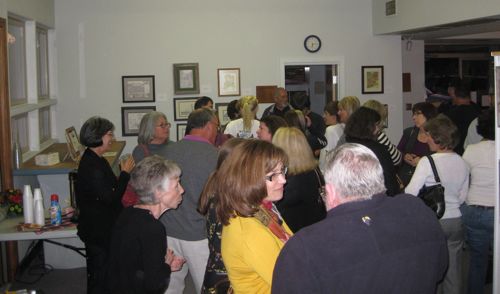
Kirby and me – 2 different people want to buy her swan drawing! (I couldn’t get the silly happy grin off my face for the entire evening, and my hair did look better in the morning, thanks for asking.)
Kim and me – between us is her first pencil drawing, her cat Scooter. And isn’t it cool that Kim and I are birthday twins, although I am about 1 hour older which means I get to boss her around.
The show will be on display at the Courthouse Gallery of the Arts in Exeter until the Tuesday after Thanksgiving (because that is the last day of drawing lessons for the year and everyone will take their pieces home then.) The hours are Tuesdays 12:30-5:30, and Saturdays and Sundays 10-4.
